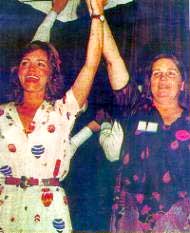Martin Ritt was an American film director that made films with socially conscious messages. His work focused on lone wolf type characters that were faced with moral dilemmas in society. He was born on March 2nd, 1914 in New York City to Jewish immigrant parents and graduated from Elon College with a degree in literature. He began acting in various theatre productions at this point and joined the Group Theatre in 1937, with which he acted in a number of successful productions. It was here that he cemented his philosophy of including social significance in his work. He served in WWII in 1942 with the Army Air Force, and after the war ended he began directing Off-broadway productions and occasionally television. In the 1930s and 40s, Ritt was a member of the Communist Party, and because of this he was prosecuted by the House of Un-American Activities Committee. He was blacklisted from his existing television roles for five years, and he used this time to take on more directing work in theatre.

In 1957, he broke back into Hollywood when he directed
Edge of the City, and he followed up his comeback with a second film in the same year,
No Down Payment. He then directed
The Long, Hot Summer (1958) starring Paul Newman and Joanne Woodaward. This was his first socially conscious film of this period in his career, but unfortunately his remaining films of the 50s were forgettable at best. He found success again though in 1961 with
Paris Blues, a travel romance with music by Duke Ellington. His next great film,
Hud (1963) is considered his greatest directorial achievement. It was a stunning modern western that had James Wong Howe win the academy award for best cinematography, Melvyn Douglas for best supporting actor, and Patricia Neal for best actress, with Paul Newman and Ritt also having nominations for best actor and director, respectively. Ritt found success again with
The Spy Who Came In from the Cold (1965) and went on to direct several commercially successful films throughout the rest of the 1960s.

Fitt continued to focus on the issues of the HUAC blacklist era with
The Molly Maguires (1970) and ventured into racism in sports with
The Great White Hope (1970), the latter of which was nominated for two academy awards. His next film,
Sounder (1972) was nominated for best picture, and his film with Woody Allen,
The Front, (1976) confronted the HUAC blacklist era yet again. In 1979, Ritt directed his most popular film,
Norma Rae, for which Sally Field won the academy award for best actress along with a nomination for best picture. He directed several films throughout the 1980s, but he struggled to find the same success that he had with
Norma Rae, and he died in 1990 at the age of 76 in California shortly after the completion of his last film,
Stanley & Iris. He is known for being a great actor director that brought the best out of his actors, and his proven track record of earning them numerous award nominations for their performances in his work was a testament to his skill.
















